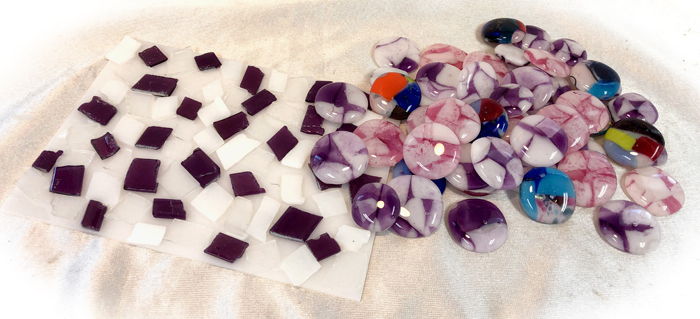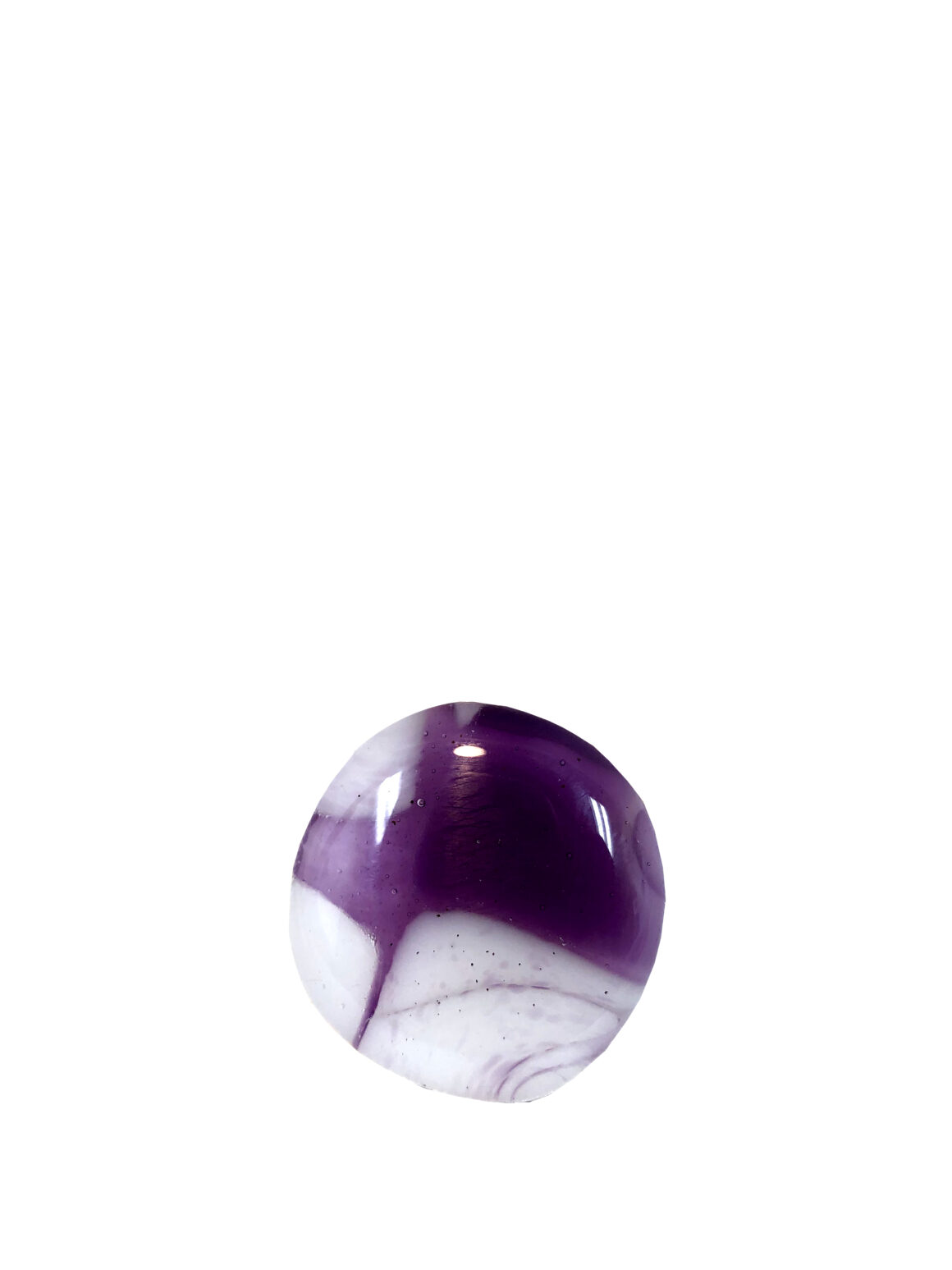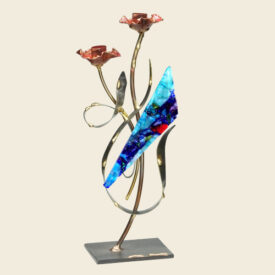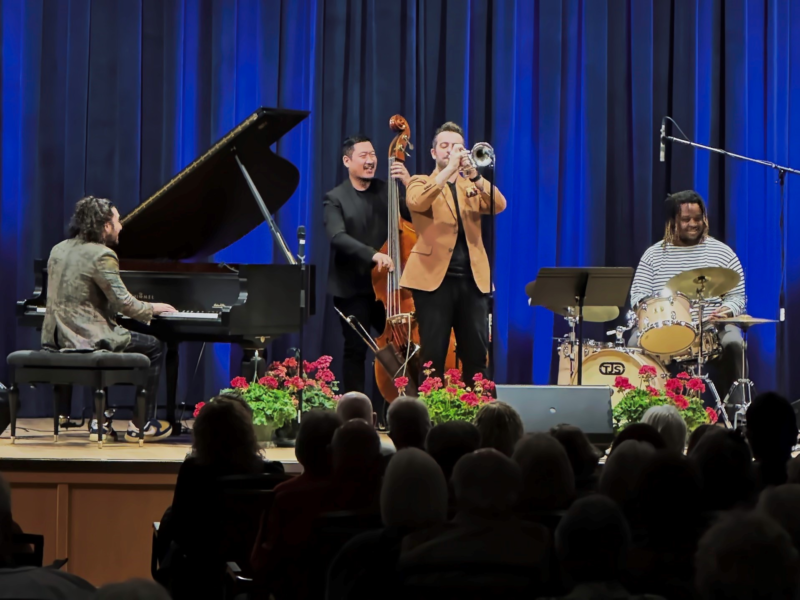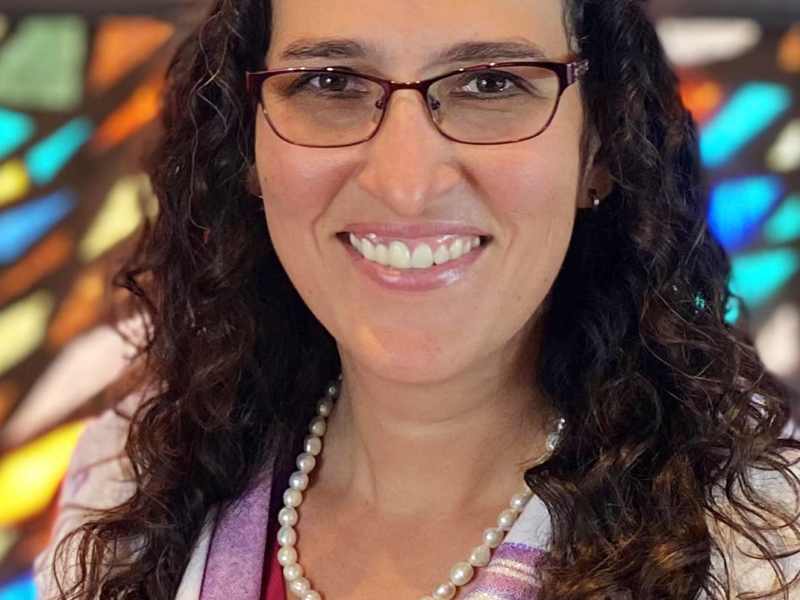Photo: A strength stone kit turns a sheet of glass into stones for cancer patients and their loved ones.
About a year ago, artist Gary Rosenthal was contemplating retirement when he received some devastating news. He had been diagnosed with pancreatic cancer. “I figured I had one to three years to live,” says Gary. “Instead of talking about retirement or crawling into a shell or something like that, I said, ‘How can I take my art and use it as a catalyst to do good?’ ”
Gary has been creating art for more than 40 years and is best known for his custom line of Judaica that combines copper, brass and steel with brilliantly colored fused glass. Using his art as a “catalyst to do good” is not a new concept. He started more than twenty years ago donating materials and working with high school students and women in shelters to create Christmas tree ornaments that they could sell to raise money.
He also worked with a group after the Marjory Stoneman Douglas High School shooting in Parkland, FL, to make 100 candlesticks for families of the high school kids impacted. “Fighting darkness with light,” says Gary.
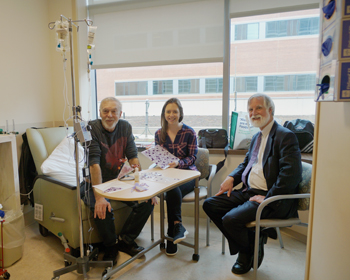
Gary, his daughter Sophie Rosenthal, and friend Mark Cackler work on a glass mosaic while Gary receives a treatment.
Then in 2005, Gary created The Glass Ribbon Project. He was inspired by the story of breast cancer survivor, oncology nurse and patient advocate, Lillian “Lillie” Shockney.
He had read an article where Lillie was walking on the beach with her mother, and she bent down and picked up two stones off the sand. She gave one to her mother and told her to hold onto the rock and say a prayer when she was undergoing chemotherapy, and she would do the same.
Gary decided to make glass “strength stones” to support breast cancer patients out of pink and white mosaic glass. He creates giant sheets of mosaics that get fired in a kiln. The fused glass is then cut into 1-inch squares and re-fired to create the very tactile finished stones. People also have the option of ordering a kit where they produce the initial mosaic sheet, send it to Gary, and he will return 50 stones to them.
buy tegretol online
“I would send 50 stones back to someone, and they would give them to their children, friends, whoever,” says Gary. “The strength stones become a connection between the person who created them, who is under treatment, and their special people.”
It wasn’t until his own treatment during the time of COVID-19 that Gary realized the real connection of the strength stones.
When he first started chemotherapy, before the pandemic, things were very different.
“I would go to the infusion center, and it was a cheery place,” Gary remembers. “One of my best friends would come in, we would have lunch together, and it was wonderful.”
He had surgery on March 20. The hospital went into lockdown, and his wife could no longer be by his side. He had to spend time in intensive care and recovery alone.
When he returned for his second round of chemotherapy, it was not the friendly place he initially visited. “The infusion center nurses were wearing masks, and you could sense the tension,” he says. “There’s no friend to come and take care of me – it’s so isolating, so different.”
He wants to give strength stones out to people who are starting chemotherapy. “I’m telling them that your friends are not going to be able to come, but you still can be connected, and this is a way to create that spiritual connection,” says Gary.
He wants to create a six-pack of strength stones available in various colors to represent the different types of cancer. Gary has set up a nonprofit and hopes to get underwriting for the six-packs of stones so that no one going through treatment will have to pay for them.
Gary has begun collaborating with a couple of national organizations, one being Project Purple out of Connecticut. They support patients with pancreatic cancer by sending them a big purple blanket. He wants to include a bag of six purple strength stones with a description of what they are in each blanket delivery. He also wants to add a note about the positive outcome he is experiencing.
buy tenormin online
“I had a wonderful attitude from like day three of knowing because that’s just the way I am,” says Gary. They caught his cancer early, and when the tumor was removed, he had clear margins, and biopsies on 18 lymph nodes have all been negative. “I have a wonderful prognosis, and as far as I’m concerned it’s almost as if I never had cancer. Attitude counts for a whole lot but luck counts for even more.”
As of the beginning of June, Gary had only one treatment left.
“I used to always tell people that my fingerprints stay on what I make forever,” says Gary. Recently, I was corrected by a rabbi who said, ‘It’s not just your fingerprints that stay on your work forever, it’s your soul print.’ ”
Of all the Judaica he has made over the years, he thinks about the Shabbat candlesticks and how he feels part of the tradition and “invited” into thousands of homes across the country every Friday night.
Gary has always felt a spiritual connection to the pieces that he creates, and the strength stones have always been a passion project. “It gives me personal pleasure that I can work with people in a time of need, and we are creating something that is making a difference for these people, for the patient and the friend.”
buy tricor online
He’s hoping to be able to take the program nationally or even internationally.
“For me, to put all my energy behind this, I had to get pancreatic cancer for it to happen! It’s the silver lining,” he says. “I’m more excited about what I’m doing than I ever have been.”
For more information on The Glass Ribbon Project, visit glassribbon.com. To see Gary Rosenthal’s artwork, visit collectgaryrosenthal.com.


